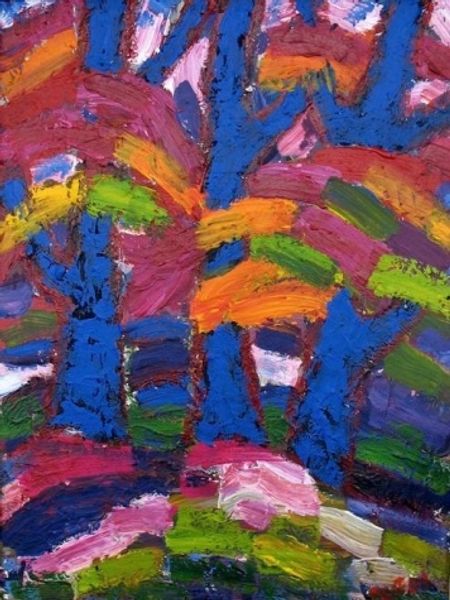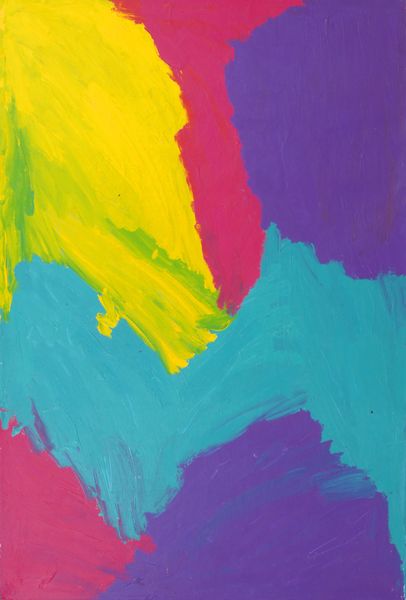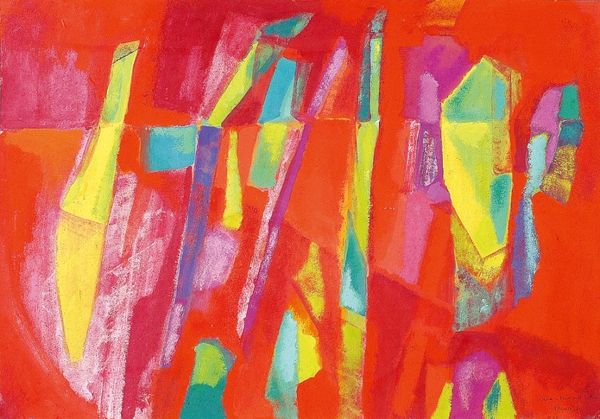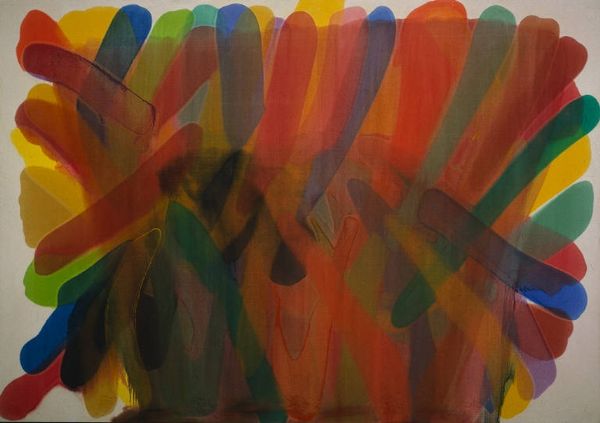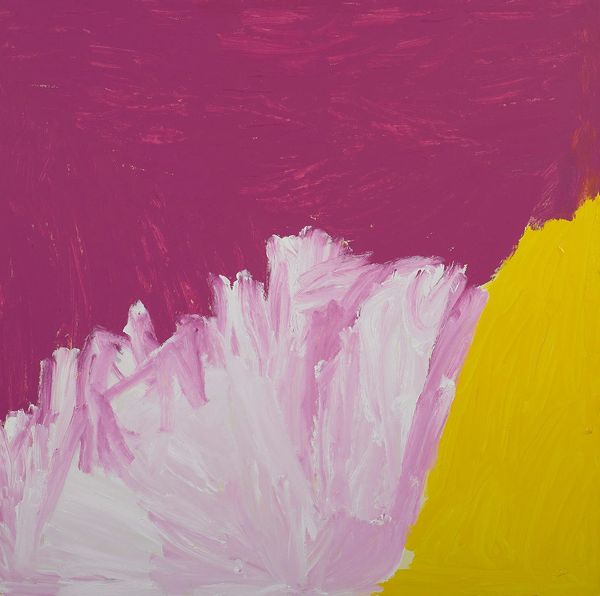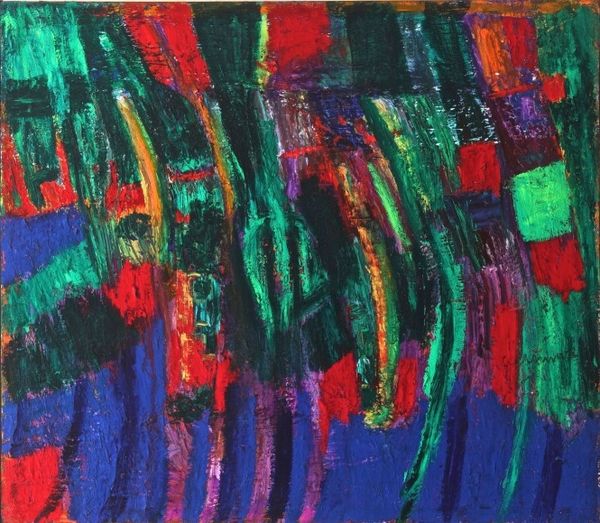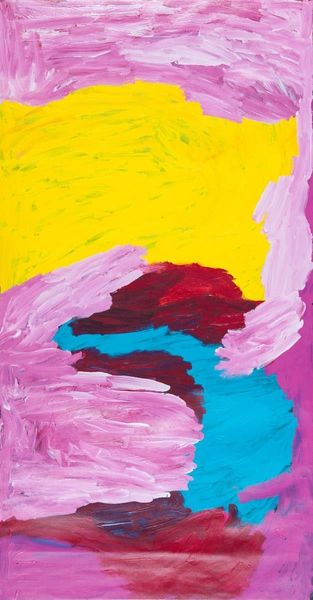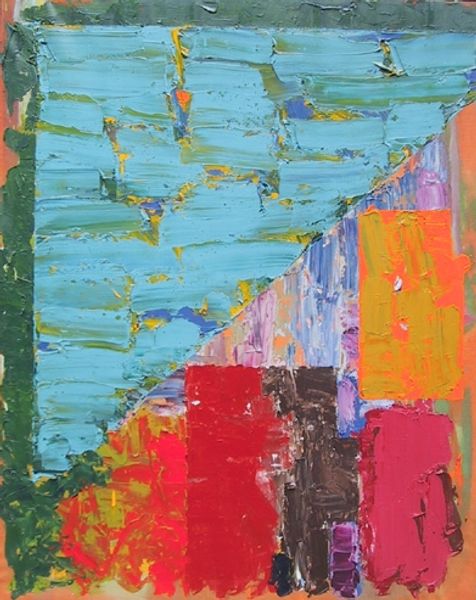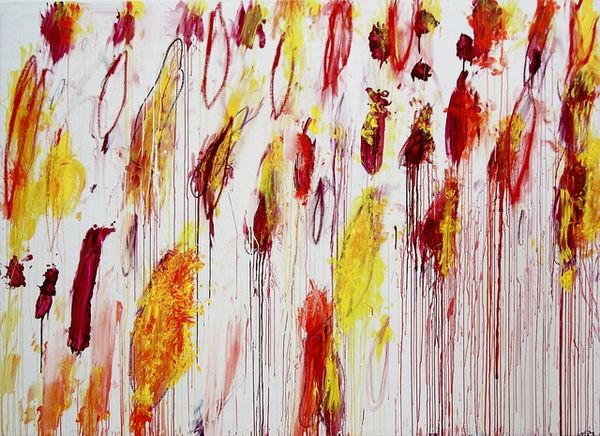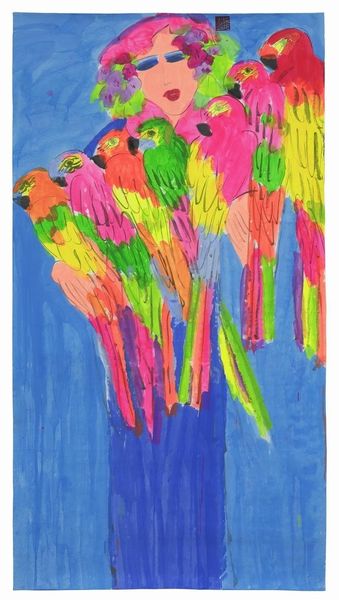
painting, acrylic-paint
#
portrait
#
pop art-esque
#
abstract expressionism
#
fauvism
#
fauvism
#
painting
#
pop art
#
acrylic-paint
#
figuration
#
group-portraits
#
expressionism
#
pop-art
#
expressionist
Copyright: Walasse Ting,Fair Use
Curator: We're looking at a vibrant, striking piece known as "Three Ladies and Parrots," attributed to Walasse Ting. He appears to be working with acrylics here, giving us this saturated palette. What are your initial impressions? Editor: Well, the color is the first thing that grabs you. The intense reds create an immediate visceral response, almost aggressive, contrasting sharply with the jewel-toned parrots perched near these female figures. It's a bold compositional choice. Curator: Ting, despite spending considerable time in New York, was deeply engaged with his Chinese heritage, fusing Eastern aesthetics with Abstract Expressionism. Considering his work, the depiction of women is crucial. Think about how cultural expectations and the gaze might influence that depiction. Editor: Absolutely. Beyond the subject, look at his line work; see how confidently he's rendered the forms. The loose, expressive strokes that create both the figures and the parrots, it seems less about capturing likeness and more about conveying energy. The balance between abstract marks and figurative elements is striking. Curator: There’s this real dialogue Ting creates between Western modernism and Chinese artistic tradition, quite palpable when considering his bold color choices alongside his free-flowing brushstrokes. We must examine his art against the backdrop of cultural exchange during the mid-20th century and the socio-political environments he engaged in. Editor: That exchange becomes even more clear in details like how each parrot seems individually colored: this almost reads as symbolic to me. Curator: What I see in "Three Ladies and Parrots" is Ting’s personal visual language being built within the global narrative of modern art history, using bright colours as a way of claiming space and attention in an art market still largely dominated by Western narratives. Editor: Agreed. Ultimately, what impresses is the sense of freedom, the artist seemingly unafraid to let the materials speak and allowing chance to shape the composition. It’s about the joyous expression as much as the symbolic intent. Curator: Precisely. Looking at the interplay between technique and cultural context broadens our grasp on Ting’s position in contemporary art and invites an important dialogue on his evolving aesthetics. Editor: An observation that, I think, does the artwork itself justice!
Comments
No comments
Be the first to comment and join the conversation on the ultimate creative platform.
